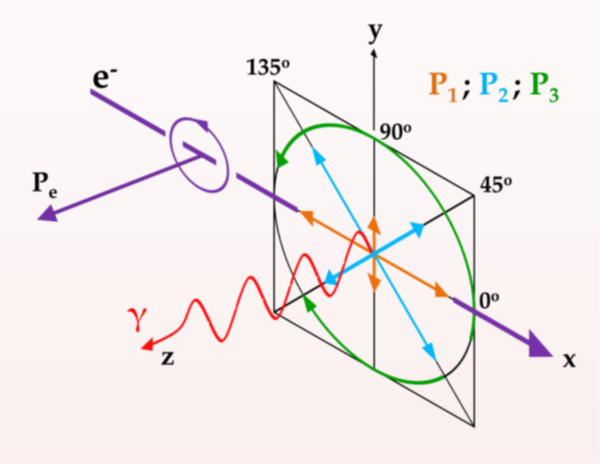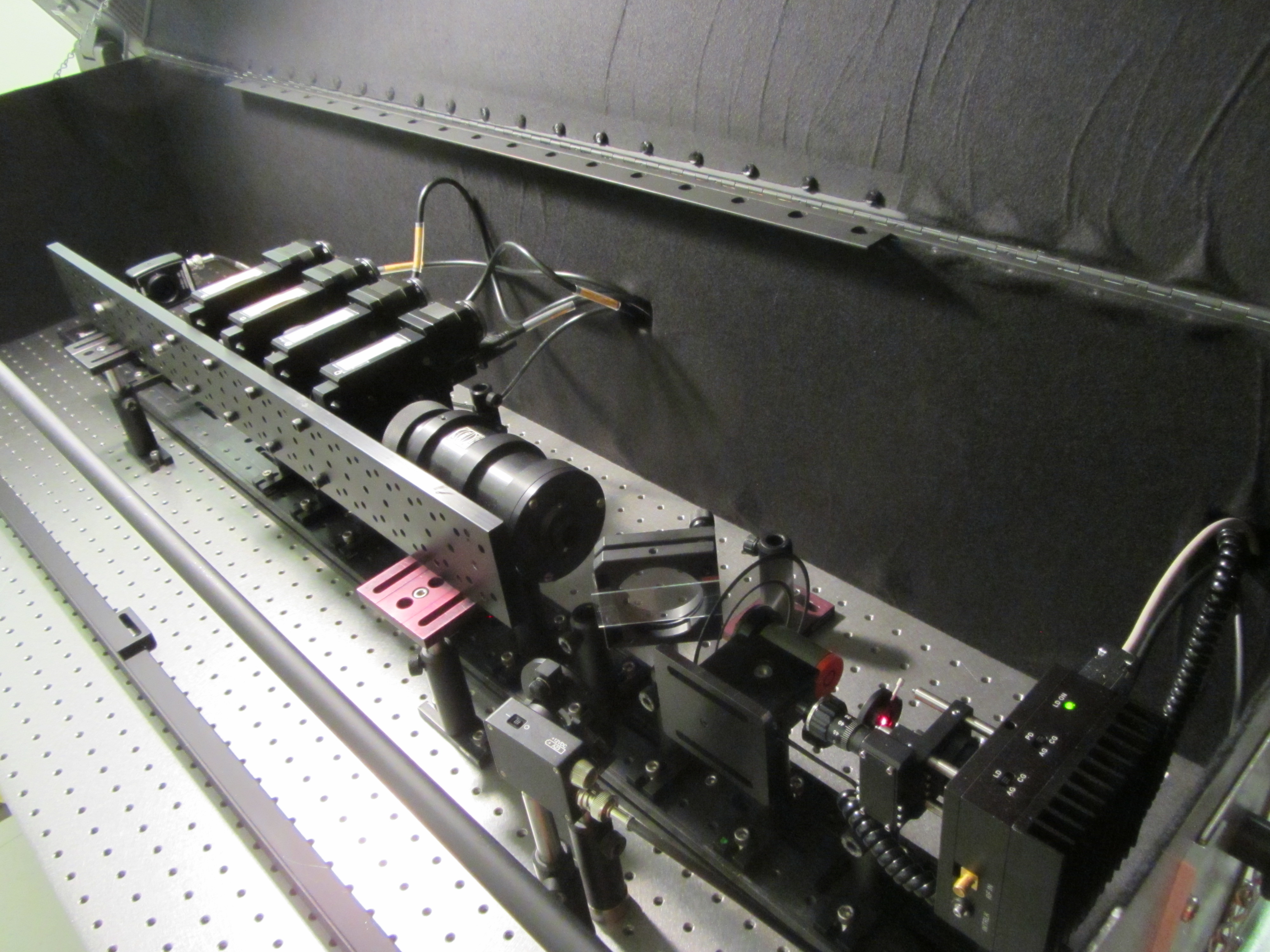Projects
Optical Polarimetery (AESOP)
|
The next generation of parity-violation experiments performed via longitudinally-polarized electron scattering from electrons and nucleons require knowledge of the electron beam polarization to an unprecedented accuracy of at least 0.5%. Accurate electron spin optical polarimetry involves impact excitation of a noble gas by spin-polarized electrons. The optical polarization of the fluoresced photons, illustrated in Figure 1, is measured, and thus the spin-polarization of the electrons can be calculated. To achieve the requisite accuracy, measurement of the polarization of the fluoresced light must be made to an accuracy of 0.1% or better. We have built a robust optical polarimeter, designated the AESOP Test Polarimeter shown in Figure 2. The design, construction, and characterization of this optical polarimeter provides tremendous insight on the specific contributors to error and their correlation in an ultra-precise optical polarimeter measurement. Critical to the understanding of such measurements include how the uncertainty in the characterization optical components comprising the polarimeter (e.g. the retardance of the analyzing quarter wave-plate) contribute to the overall uncertainty of the measurement. Constant improvement to this polarimeter leads to the development of strict measurement protocol and error mitigation. To aid in this endeavor, the optical ray-tracing program TracePro® is used extensively to model and analyze the behavior of the Test Polarimeter. In particular, this program allows for the quantification of how the optical components in the polarimeter themselves change the polarization state of the light to be measured. Recently, the Test Polarimeter has measured to the polarization of linearly-polarized light to an accuracy of 0.039% and a precision of 0.002%. Work is now underway on the measurement of the polarization of light with arbitrary elliptical polarization to the requisite accuracy of 0.1%. 
Figure 1: Transversely-polarized electrons propagate along the x-axis and impact a noble gas target. The fluoresced light is detected along the z-axis: the electron spin direction. Measurement of the relative Stokes parameters of the fluoresced light, P1, P2, and P3, allow for calculation of the spin-polarization of the electron beam. 
Figure 2: Photograph of the AESOP Test Polarimeter. The design and operation of this polarimeter is constantly updated and improved, and leads to the strict protocols necessary for the measurement of polarization to 0.1%. |
Publications
Explore More
|
